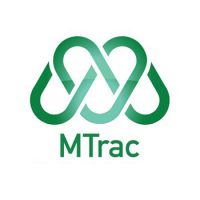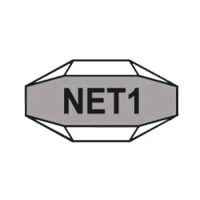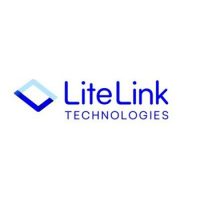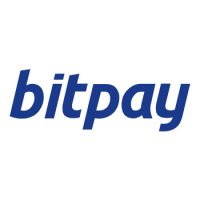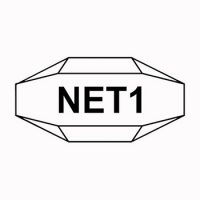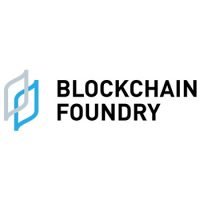Blockchain
Intriguing Ways Blockchain Explorers Can Bridge Different Blockchains: The Future of Interoperability

The current blockchain landscape is fragmented, with numerous blockchains operating independently. This lack of interoperability hampers the free flow of information and assets, limiting the technology’s full potential. However, blockchain explorers are emerging as a hopeful solution. By enhancing their functionalities, these explorers could play a pivotal role in connecting different blockchains in 2024 and beyond.
Understanding the Interoperability Challenge
Blockchain interoperability refers to the ability of different blockchains to communicate and exchange data with each other. Achieving true interoperability is crucial for several reasons:
- Fragmented Ecosystem: Without interoperability, isolated blockchains restrict innovation and collaboration across the blockchain space.
- Limited User Experience: Users must navigate multiple wallets and interfaces for different blockchains, complicating accessibility and user experience.
- Restricted Asset Flow: The inability to seamlessly transfer assets between blockchains creates inefficiencies and limits the growth of decentralized finance (DeFi).
The Rise of Blockchain Explorers as Bridges
The blockchain ecosystem is vibrant yet fragmented, with numerous blockchains operating with distinct protocols and functionalities. This fragmentation creates a significant challenge: how do users interact with assets and information across these disparate chains? Blockchain explorers are stepping up as unsung heroes, acting as bridges to connect these isolated data islands.
The Blockchain Archipelago: A Sea of Isolated Chains
Imagine a vast archipelago where each island represents a unique blockchain. Each island has its own currency, laws (protocols), and inhabitants (applications). While some islands are bustling metropolises (like Ethereum), others are quaint villages (niche blockchains). Traditionally, interaction between these islands has been limited. Users with assets on one chain couldn’t easily use them on another, restricting the flow of information and innovation and hindering overall ecosystem growth.
Enter the Blockchain Explorer: A Lighthouse in the Digital Sea
Blockchain explorers act as lighthouses, guiding users through the blockchain archipelago. These web applications allow users to view and interact with blockchain data, functioning as powerful search engines:
- Track Transactions: Explore blockchain transactions, providing transparency and accountability. Users can see fund movements, smart contract interactions, and identify suspicious activities.
- View Wallet Balances: Check the balance of any address on the blockchain, regardless of the coin or token held. This helps users track their holdings and those of others (with public addresses).
- Explore Block Data: Delve into the details of each block on the blockchain, including timestamps, transaction details, and miner information, offering a granular view of blockchain activity.
- Interact with DApps: Some explorers allow interaction with Decentralized Applications (DApps) built on the blockchain, bridging the gap between explorers and DApp user interfaces.
Beyond Basic Functionality: Advanced Features Light the Way
Modern blockchain explorers go beyond basic functionalities, offering advanced features that further enhance their role as bridges:
- Multi-Chain Support: Leading explorers support multiple blockchains, allowing users to seamlessly switch between chains and view their assets in one place.
- Search and Analytics: Advanced search functions enable users to filter and query blockchain data easily. Analytical tools provide insights into network activity, transaction patterns, and token behavior.
- Smart Contract Verification: Explorers can verify the code of smart contracts, fostering trust and transparency in their functionality. This helps users make informed decisions before interacting with DApps.
- Block Visualization: Interactive block visualizations provide a clear picture of how blocks are interconnected, aiding in understanding the blockchain’s structure.
The Future of Blockchain Explorers: Building Bridges of Trust
The rise of blockchain explorers signifies a crucial shift in the blockchain landscape. As the number of blockchains continues to grow, explorers will play a central role in bridging the gaps between them. Their ability to provide transparency, facilitate interaction, and enhance security will be paramount for the continued growth and adoption of blockchain technology.
Here are some exciting possibilities for the future of blockchain explorers:
- Cross-Chain Transactions: Explorers could evolve to facilitate direct transactions between different blockchains, eliminating the need for centralized exchanges.
- Real-Time Data: Real-time data visualization could provide a dynamic view of blockchain activity, allowing for better decision-making and risk assessment.
- Identity Management: Explorers could integrate with decentralized identity solutions, enabling secure and portable user identities across different blockchains.
By acting as bridges of information and interaction, blockchain explorers are poised to play a vital role in unifying the fragmented blockchain landscape. As this technology continues to evolve, explorers will undoubtedly become more sophisticated, illuminating the path towards a more interconnected and prosperous blockchain future.
Also Read: Can Applications Communicate Over Blockchains? Unraveling The Interoperability Challenge In Decentralized Systems
Emerging Technologies for Interoperability
The promise of blockchain technology lies in its potential to revolutionize how we interact with value and information. However, the current landscape presents a fragmented picture, with numerous blockchains operating in silos. This lack of interoperability hinders the free flow of data and assets, limiting the true potential of the technology. But on the horizon, a new wave of technologies is emerging, poised to transform blockchain explorers into the linchpins of a connected future.
The Interoperability Challenge: Islands of Innovation
Imagine a world map where continents represent blockchains. Each continent, with its unique topography (protocols), flora (applications), and fauna (tokens), thrives in isolation. While some continents boast robust ecosystems (Ethereum), others remain nascent, unexplored territories (niche blockchains). The challenge lies in establishing bridges between these continents, enabling seamless exchange of resources and fostering collaboration.
Bridging the Gap: Interoperability Protocols
Interoperability protocols are emerging as game changers, acting as underwater tunnels connecting the continents and facilitating communication and data exchange between different blockchains. Some leading contenders include:
- Cross-Chain Communication Protocols (CCPs): These protocols establish direct communication channels between blockchains, allowing for the secure transfer of data and assets. Examples include Cosmos IBC, Polkadot, and LayerZero.
- Inter-Blockchain Communication (IBC): This application-level protocol enables communication between sovereign blockchains, fostering a modular and scalable blockchain ecosystem.
- Sidechains and Plasma Chains: These are specialized blockchains that operate alongside a main chain, enabling faster transactions and experimentation with different functionalities.
- Oracles: These act as trusted intermediaries, bringing off-chain data (like real-world prices) onto the blockchain, enabling smart contracts to interact with the external world.
Blockchain Explorers: Evolving from Viewers to Facilitators
With the advent of interoperability protocols, blockchain explorers are poised to transcend their traditional role of simply viewing blockchain data. They will become powerful tools that leverage these protocols to:
- Facilitate Cross-Chain Transactions: Users will be able to seamlessly transfer assets between different blockchains directly through explorers, eliminating the need for centralized exchanges and wrapped tokens.
- Enable Interoperable DApps: Imagine a Decentralized Application (DApp) that utilizes functionalities across multiple blockchains. Explorers will become the launchpads for these interoperable DApps, fostering a new era of innovation in the blockchain space.
- Provide Multi-Chain Analytics: Explorers will evolve to not only display data from various blockchains but also offer unified analytics that paint a holistic picture of the interconnected blockchain ecosystem. Users can gain insights into cross-chain asset movements, network activity on different chains, and identify emerging trends across the entire landscape.
The Role of Blockchain Explorers in a More Interoperable Future
The fragmented nature of the current blockchain landscape hinders the true potential of this revolutionary technology. However, blockchain explorers are emerging as the unsung heroes, poised to play a critical role in fostering a more interoperable future.
Navigating the Fragmented Seas: Transparency and Accessibility
Blockchain explorers act as lighthouses, guiding users through the vast archipelago of blockchains. They provide transparency and accessibility by allowing users to:
- Track Transactions Across Chains: With the advent of interoperability protocols, explorers will enable users to track the movement of assets across different blockchains. This fosters trust and accountability within the ecosystem.
- View Multi-Chain Balances: Imagine a unified dashboard displaying the balance of all your crypto holdings, irrespective of the blockchain they reside on. This convenience will be facilitated by explorers in a more interoperable future.
- Compare and Analyze Cross-Chain Data: Explorers will evolve to not only display data but also offer comparative analytics across various blockchains. This will allow users to identify trends, assess risks, and make informed investment decisions within the interconnected ecosystem.
Beyond Transparency: Facilitating Interaction in a Connected World
The role of blockchain explorers extends beyond simply offering a window into the blockchain world. They will become bridges that enable users to interact with this interconnected landscape:
- Cross-Chain Transactions: Explorers will integrate with interoperability protocols to facilitate seamless asset transfers between different blockchains. Users will no longer need to rely on centralized exchanges or wrapped tokens for cross-chain transactions.
- Interoperable DApp Launchpads: Imagine a platform where developers can launch DApps that leverage functionalities from multiple blockchains. Explorers can evolve into such launchpads, fostering a new era of innovation in the blockchain space.
- Streamlined User Experience: With multi-chain support and the ability to interact with DApps across different blockchains, explorers will streamline the user experience. Users will have a single point of access to manage their assets, interact with DApps, and participate in the broader blockchain ecosystem.
Building a Connected Future: Collaboration is Key
The future of a more interoperable blockchain landscape hinges on collaboration between various stakeholders:
- Blockchain Developers: Building interoperable protocols and integrating them with explorers is crucial for a unified future.
- Explorer Developers: Continuously innovating and incorporating emerging technologies like AI and privacy
Source: blockchainmagazine.net
The post Intriguing Ways Blockchain Explorers Can Bridge Different Blockchains: The Future of Interoperability appeared first on HIPTHER Alerts.
Blockchain
Blocks & Headlines: Today in Blockchain – May 9, 2025

Welcome to Blocks & Headlines, your daily deep-dive into the most impactful movements in blockchain technology and the cryptocurrency sector. In today’s edition, we unpack five major stories that illuminate trends in funding, sustainability, payment innovation, banking collaborations, and technical interoperability—all vital signposts for developers, investors, and Web3 enthusiasts. Here’s what’s on the docket:
-
Camp Network’s New IP-Focused Testnet
-
Blockchain for Sustainable Packaging
-
Meta’s Blockchain-Based Payment System Plans
-
Mocse Credit Union Joins Metal Blockchain’s Innovation Program
-
Apex Fusion on the Urgency of Blockchain Defragmentation
Through concise reporting, opinion-driven analysis, and SEO-optimized insights—featuring keywords like blockchain, cryptocurrency, Web3, DeFi, and NFTs—we’ll explore how these developments shape the next wave of decentralized finance, enterprise adoption, and mass onboarding.
1. Camp Network Launches Testnet for IP-Focused Blockchain
What Happened:
Camp Network has unveiled its long-anticipated testnet following a $30 million funding round led by leading crypto VCs. This new network is tailored for intellectual property (IP) asset tokenization, aiming to streamline rights management and royalty payments via smart contracts.
-
Technical Highlights:
-
Modular Consensus: Hybrid PoS/PoA consensus that allows IP rightsholders to validate transactions.
-
On-Chain Licensing: Smart contracts enabling programmable licensing terms, automated royalty splits, and revocable access controls.
-
Interoperability: Bridges to Ethereum and Polygon enable seamless asset transfers and liquidity provisioning.
-
Analysis & Implications:
By focusing on IP tokenization, Camp Network addresses a glaring gap in current NFT platforms, which often lack robust legal-framework integration. This specialization could catalyze:
-
New Revenue Models: Musicians, authors, and inventors can fractionalize royalties, unlocking liquidity and democratizing investment in creative works.
-
Institutional Adoption: Traditional publishers and studios may pilot tokenized licensing, accelerating blockchain’s entrée into regulated industries.
-
Secondary Markets: With on-chain licensing data, marketplaces can enforce provenance and anti-fraud measures more effectively.
Camp Network’s testnet success will hinge on developer tooling, legal partnerships, and gas-fee economics. Should it deliver a smooth UX and clear ROI for rightsholders, it could set a new standard for Web3 IP infrastructure.
Source: The Block
2. Blockchain as a Sustainable Packaging Game-Changer
What Happened:
A recent report explores how blockchain can revolutionize sustainable packaging by delivering end-to-end supply-chain transparency. The solution combines on-chain tracking of materials, IoT sensor data for carbon footprint measurement, and tokenized incentives for recycling.
-
Key Components:
-
Immutable Traceability: Each packaging component is logged on a public ledger, enabling consumers to verify sustainable sourcing.
-
Carbon Credit Tokens: Brands earn tokenized credits when they hit recycling targets, tradable on carbon-market DAOs.
-
Consumer-Facing Apps: QR-code scanning interfaces reveal environmental impact metrics and reward programs.
-
Analysis & Implications:
Integrating blockchain with sustainable packaging tackles greenwashing and fragmented reporting. The ability to tie physical materials to on-chain records introduces:
-
Enhanced Accountability: Brands face real-time public scrutiny of ESG claims, improving trust and regulatory compliance.
-
Market Mechanisms: Carbon credit tokens linking packaging to broader DeFi ecosystems incentivize circular economy behaviors.
-
Consumer Engagement: NFTs or loyalty tokens tied to sustainable purchases could accelerate brand loyalty in eco-conscious demographics.
This convergence of blockchain, IoT, and token economics exemplifies how decentralized technologies can underpin not only financial systems but also planetary stewardship.
Source: Yahoo Finance
3. Meta Plans New Blockchain-Based Payment System
What Happened:
Meta is reportedly developing a blockchain-powered payment network to underpin its digital wallet ambitions, aiming to facilitate low-fee remittances, in-app purchases, and peer-to-peer transfers across Facebook, Instagram, and WhatsApp.
-
Proposed Features:
-
Cross-Border Settlements: Utilizing stablecoins pegged to major fiat currencies to avoid volatility.
-
Layer-2 Scalability: Built atop an Ethereum Layer-2 or a proprietary chain to ensure sub-second confirmation times and minimal fees.
-
Regulatory Compliance: On-chain KYC/AML checks integrated via permissioned sidechains.
-
Analysis & Implications:
Meta’s push into blockchain payments could reshape the competitive landscape:
-
Crypto On-Ramp: With 3 billion+ monthly users, built-in wallet functionality could massively expand mainstream cryptocurrency adoption.
-
Disintermediation Risk: Traditional payment processors and remittance services face margin compression as Meta internalizes transaction flows.
-
Regulatory Scrutiny: Centralized control of a global payments network raises data-privacy and antitrust questions, likely attracting significant oversight.
If Meta balances decentralization ethos with compliance demands, it could serve as a blueprint for other Big Tech firms eyeing Web3 integration.
Source: Dig.watch
4. Mocse Credit Union Joins Metal Blockchain’s Banking Innovation Program
What Happened:
Mocse Credit Union has signed on to Metal Blockchain’s Banking Innovation Program, a consortium designed to accelerate pilot projects in tokenized lending, fractional deposits, and programmable savings accounts.
-
Program Benefits:
-
Sandbox Environment: Regulatory-compliant testbeds for tokenized asset experiments.
-
API Integrations: Plug-and-play modules for KYC, smart-contract auditing, and fiat-crypto on-ramps.
-
Co-Innovation Workshops: Joint labs with fellow financial institutions and DeFi projects.
-
Analysis & Implications:
This partnership signals the banking sector’s growing willingness to explore blockchain beyond hype:
-
Tokenized Deposits: By issuing interest-bearing stablecoin equivalents, credit unions can attract a new demographic of digitally native savers.
-
Risk Management: Sandboxed pilots allow institutions to evaluate smart-contract risks without exposing core systems.
-
Interoperable Finance: Aligning legacy banking with DeFi rails can unlock hybrid products—e.g., flash loans collateralized by insured deposits.
Such collaborations could spearhead a wave of embedded finance offerings, blurring the lines between centralized and decentralized banking infrastructures.
Source: Newswire
5. Apex Fusion: Defragmenting Blockchain for Mass Adoption
What Happened:
In an op-ed, Apex Fusion argues that blockchain interoperability and defragmentation are critical prerequisites for mainstream Web3 uptake. The piece advocates standardized cross-chain messaging protocols, unified identity layers, and aggregated liquidity pools.
-
Core Proposals:
-
Protocol Neutral Messaging: A universal middleware to transmit value and data across disparate chains.
-
Decentralized Identity (DID): A shared credential framework enabling seamless dApp logins without wallet-hopping.
-
Liquidity Hubs: Cross-chain Automated Market Makers (AMMs) that pool assets to reduce slippage and gas friction.
-
Analysis & Implications:
A fragmented blockchain ecosystem hinders user experience and developer efficiency:
-
Onboarding Friction: New users face wallet complexity, chain-switching hassles, and inconsistent UX across apps.
-
Capital Inefficiency: Isolated liquidity silos lead to higher trading costs and limit DeFi yield optimization.
-
Developer Overhead: Building multichain dApps requires fragmented toolkits and disparate security audits.
Solving these challenges through interoperable frameworks will be pivotal for DeFi, NFT, and enterprise Web3 solutions to scale beyond niche audiences. Apex Fusion’s recommendations may inform upcoming standards efforts by bodies like the Blockchain Governance Initiative Network (BGIN).
Source: Euro Weekly News
Conclusion
Today’s blockchain developments reflect a maturing industry at the crossroads of innovation and integration:
-
Specialized Networks: Camp Network’s IP testnet showcases niche use-cases driving targeted blockchain deployments.
-
Sustainability & Token Economics: Linking environmental impact to on-chain incentives demonstrates blockchain’s potential in non-financial arenas.
-
Big Tech Entry: Meta’s payment ambitions could accelerate global crypto adoption while raising regulatory stakes.
-
Banking Collaboration: Programs like Metal Blockchain’s underscore financial institutions’ appetite for safe, regulated Web3 experimentation.
-
Interoperability Imperative: As Apex Fusion highlights, defragmentation and cross-chain standards are essential for seamless UX and liquidity flow.
As blockchain weaves deeper into finance, supply chains, and digital ecosystems, the future hinges on striking the right balance between decentralization, compliance, and user-centric design. Stay tuned for tomorrow’s Blocks & Headlines where we continue to chronicle the pulse of Web3 innovation.
The post Blocks & Headlines: Today in Blockchain – May 9, 2025 appeared first on News, Events, Advertising Options.
Blockchain
Bitget Blockchain4Youth sostiene l’innovazione del Web3 e dell’IA all’hackathon “Build with AI” di Google Developer Group

Bitget, società Web3 e uno dei principali exchange di criptovalute, ha ottenuto un riscontro significativo in occasione del recente hackathon “Build with AI”, tenutosi dal 2 al 5 maggio 2025 presso la Constructor University. Spingendosi oltre la semplice sponsorizzazione, l’iniziativa Blockchain4Youth di Bitget ha coinvolto attivamente più di 130 studenti di talento.
L’evento, organizzato dai Google Developer Groups (GDG) on Campus, ha offerto a Bitget uno spazio dinamico per entrare in contatto diretto con gli innovatori tecnologici di nuova generazione. Nel corso di una presentazione dedicata, è stato introdotto il programma Blockchain4Youth Builder, che mostra l’impegno di Bitget nel formare giovani talenti all’interno dello spazio del Web3. Questa partecipazione evidenzia l’approccio lungimirante di Bitget nell’integrare la formazione in materia di blockchain con i settori emergenti come l’IA, riconoscendo il loro potenziale combinato.
Gli studenti hanno lavorato alla creazione di modelli basati sull’IA e di prodotti in fase iniziale utilizzando gli strumenti avanzati di Google, mentre la presenza di Bitget ha offerto una prospettiva unica su come la blockchain possa migliorare ed essere integrata nelle soluzioni di IA. Questa interazione con il mondo reale ha fornito preziose indicazioni agli studenti, colmando il gap tra conoscenze teoriche e applicazione pratica all’interno del panorama tecnologico in rapida evoluzione.
“La formazione rimane un principio fondamentale della nostra missione e, attraverso iniziative come Blockchain4Youth, intendiamo fornire alle nuove generazioni le competenze necessarie non solo per esplorare, ma anche per plasmare attivamente questo settore dinamico”, ha commentato Vugar Usi Zade, COO di Bitget. “Collaborare con comunità come il Google Developer Group offre una base preziosa per connettersi con talenti di spicco e aiutarli nel percorso di utilizzo della blockchain per creare soluzioni di impatto. Blockchain4Youth continuerà a espandere la sua portata, favorendo la crescita dei futuri leader del Web3 in grado di cogliere le numerose opportunità offerte da questa tecnologia”.
Il coinvolgimento mostrato all’hackathon “Build with AI” di GDG è un elemento chiave del più ampio programma Blockchain4Youth di Bitget, l’iniziativa aziendale dedicata alla Responsabilità Sociale d’Impresa (RSI). Questo programma mira a favorire la prossima generazione di leader Web3 attraverso opportunità formative ed esperienze pratiche.
Tra le iniziative più recenti del programma Blockchain4Youth c’è il lancio del Graduate Program di Bitget, concepito per reclutare i migliori laureati nel settore blockchain e Web3. Inoltre, l’espansione del programma Bitget Builders continua a fornire agli individui più promettenti del Web3 un’esperienza diretta attraverso gli eventi offline, i programmi formativi e la crescita strategica della community.
A proposito di Bitget
Fondata nel 2018, Bitget è una società Web3 tra i principali exchange di criptovalute al mondo. Con oltre 100 milioni di utenti in più di 150 Paesi e aree geografiche, l’exchange Bitget si impegna ad aiutare gli utenti a fare trading in modo più smart con la sua pionieristica funzione di copy trading e altre soluzioni di trading.
The post Bitget Blockchain4Youth sostiene l’innovazione del Web3 e dell’IA all’hackathon “Build with AI” di Google Developer Group appeared first on News, Events, Advertising Options.
Blockchain
India’s Fintech Market to Reach $990 Billion by 2032 at 30.2% CAGR – Fintech Firms Eye Untapped Indian Digital Payments Market with Secure, Low-Cost Digital Financial Solutions
-

 Blockchain Press Releases4 days ago
Blockchain Press Releases4 days agoHTX Premieres USD1 Stablecoin Globally, Partnering with World Liberty Financial to Forge a New Era of Decentralized Economy
-
Blockchain3 days ago
Colb Asset SA Raises $7.3 Million in Oversubscribed Round to Bring Pre-IPO Giants to Blockchain
-

 Blockchain7 days ago
Blockchain7 days agoUnitedStaking.com Launches Advanced Crypto Staking Platform with Global Reach and Real-World Impact
-

 Blockchain2 days ago
Blockchain2 days agoBlocks & Headlines: Today in Blockchain – May 7, 2025 | Coinbase, Riot Games, Curve DAO, Litecoin, AR.IO
-

 Blockchain Press Releases4 days ago
Blockchain Press Releases4 days agoJuCoin made a global impact at TOKEN2049 Dubai, advancing its ecosystem with the “Peak Experience” vision and JuChain’s robust tech.
-

 Blockchain Press Releases2 days ago
Blockchain Press Releases2 days agoHTX and Justin Sun Launch $6M Mars Program Special Edition, Offering One User a Historic Space Journey
-

 Blockchain Press Releases3 days ago
Blockchain Press Releases3 days agoGRVT Launches Biggest Ever Trading Competition for Retail Traders, Offering Up to 175,000 USDT in Prizes
-

 Blockchain Press Releases3 days ago
Blockchain Press Releases3 days agoCango Inc. Maintains Strong Mining Efficiency and Expands Bitcoin Holdings Amidst April Production Shift







